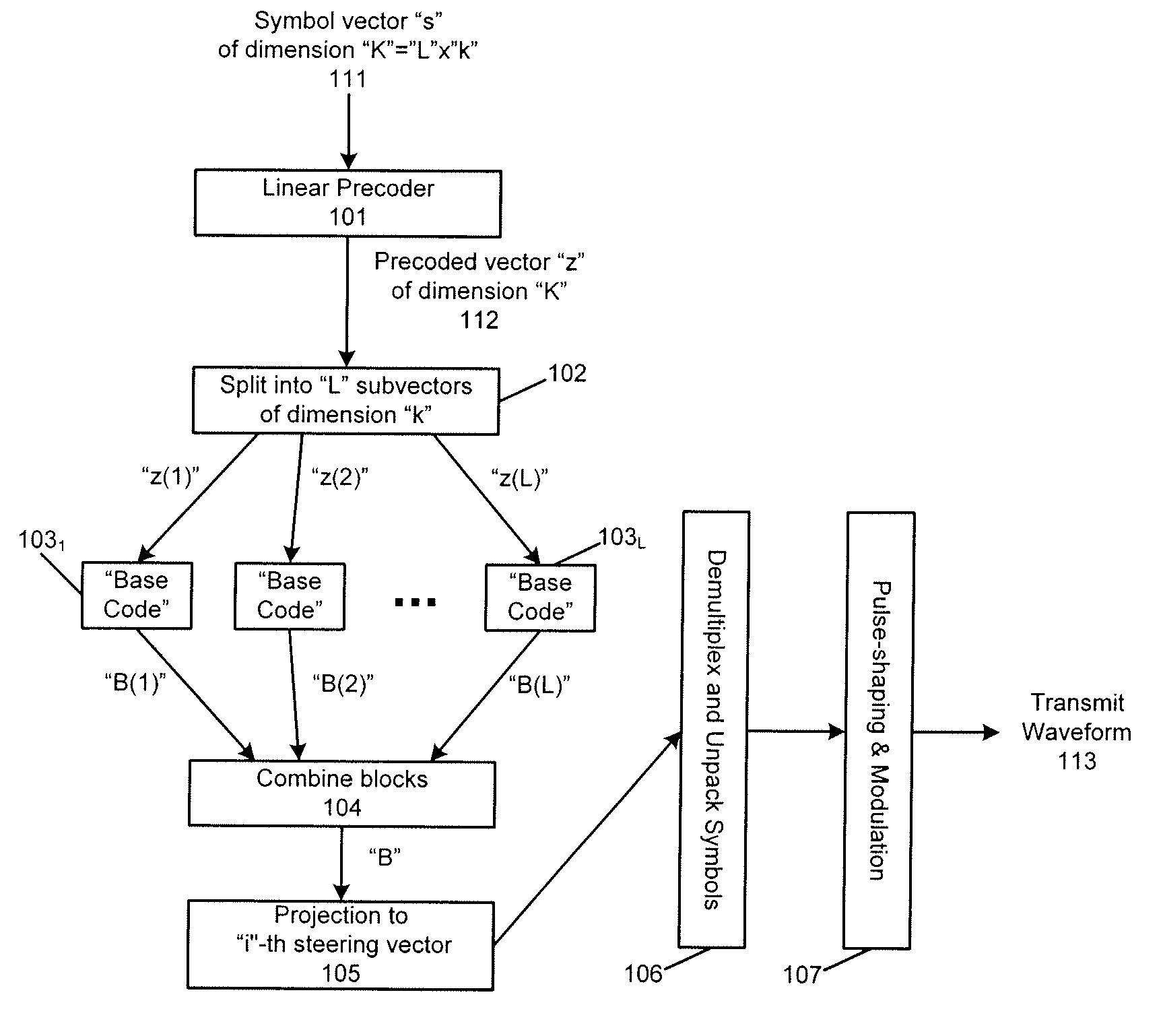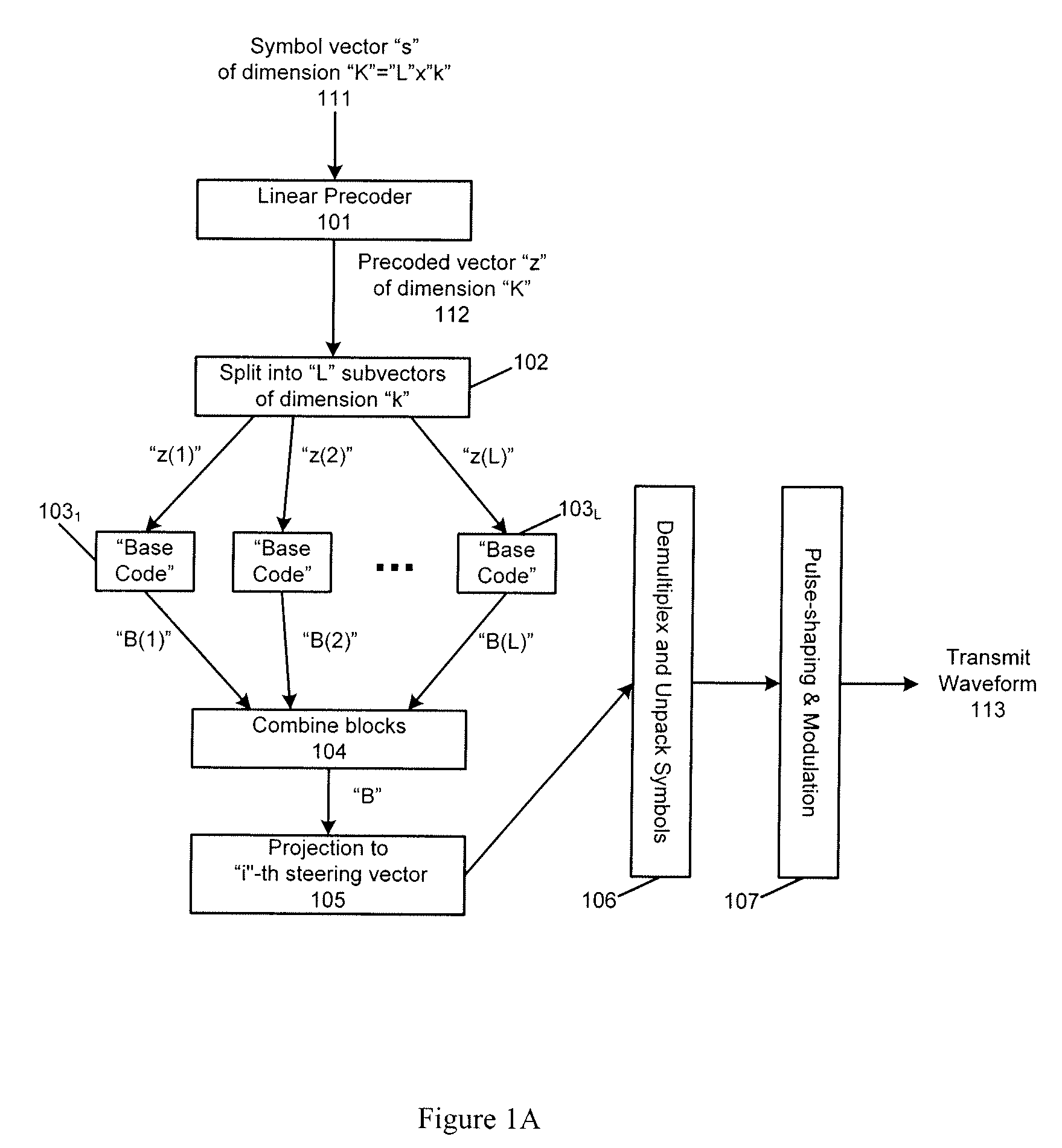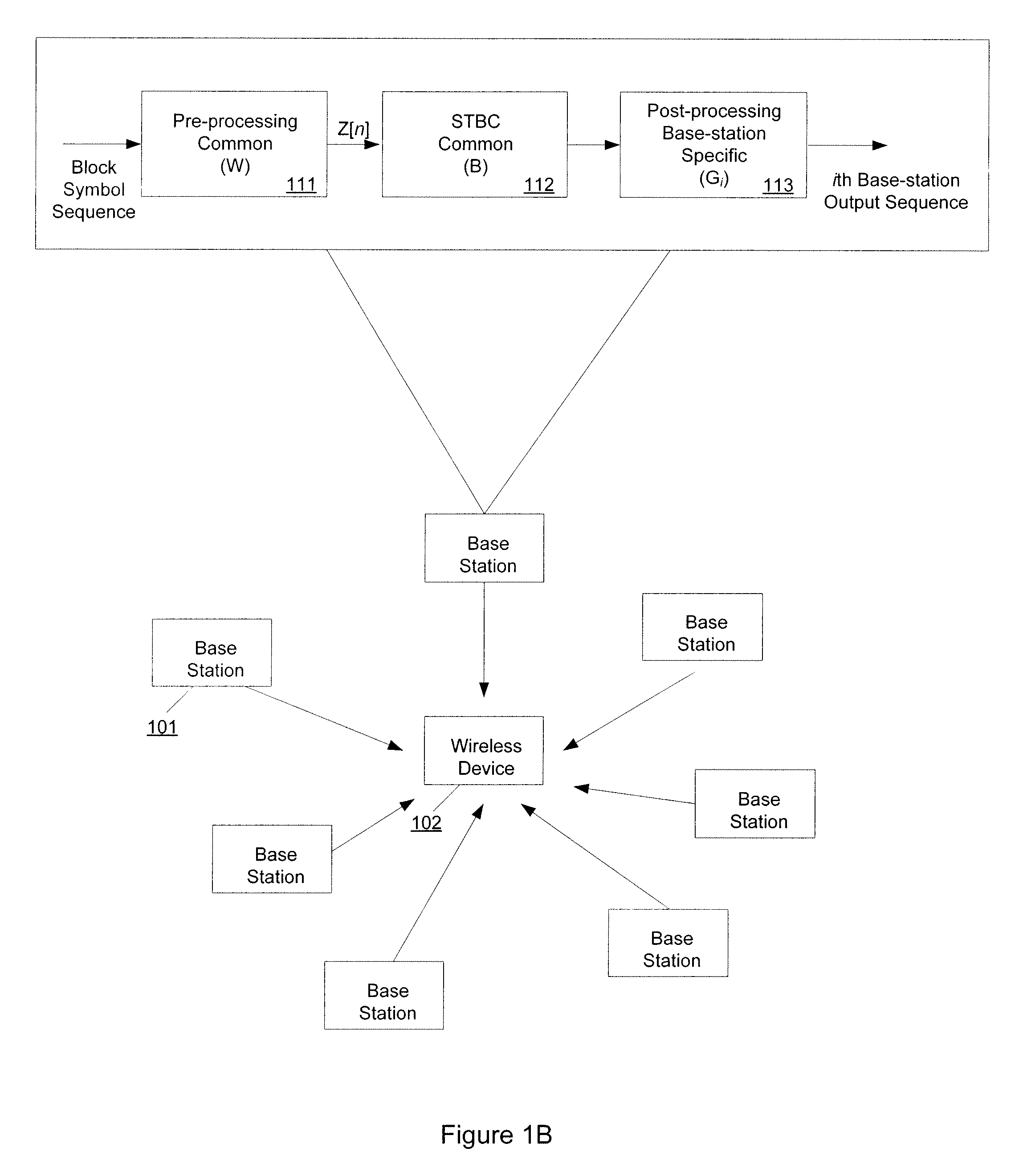Method and apparatus for distributed space-time coding in wireless radio networks
a wireless radio network and distributed spacetime technology, applied in pulse techniques, instruments, site diversity, etc., can solve the problems of limited applicability, inefficient bandwidth utilization, and no (complex) full-rate orthogonal designs for more than two antennas
- Summary
- Abstract
- Description
- Claims
- Application Information
AI Technical Summary
Benefits of technology
Problems solved by technology
Method used
Image
Examples
Embodiment Construction
[0021]A number of recently developed techniques and emerging standards suggest employing multiple antennas at a base station to improve the reliability of data communication over wireless media without compromising the effective data rate of the wireless systems. Specifically, recent advances in wireless communications have demonstrated that the presence of multiple antennae at a base station can be exploited to provide reliability (diversity) benefits as well as throughout benefits in data transmission from the base station to cellular users. These multiplexing and diversity benefits are inherently dependent on the number of transmit and receive antennas in the system been deployed, as they are fundamentally limited by the multiplexing-diversity trade-offs curves.
[0022]In many emerging and future radio networks, the data for any particular cell user may be available to multiple base stations. Any such base station with data for the user of interest is referred to herein as an “acti...
PUM
 Login to View More
Login to View More Abstract
Description
Claims
Application Information
 Login to View More
Login to View More - R&D
- Intellectual Property
- Life Sciences
- Materials
- Tech Scout
- Unparalleled Data Quality
- Higher Quality Content
- 60% Fewer Hallucinations
Browse by: Latest US Patents, China's latest patents, Technical Efficacy Thesaurus, Application Domain, Technology Topic, Popular Technical Reports.
© 2025 PatSnap. All rights reserved.Legal|Privacy policy|Modern Slavery Act Transparency Statement|Sitemap|About US| Contact US: help@patsnap.com



